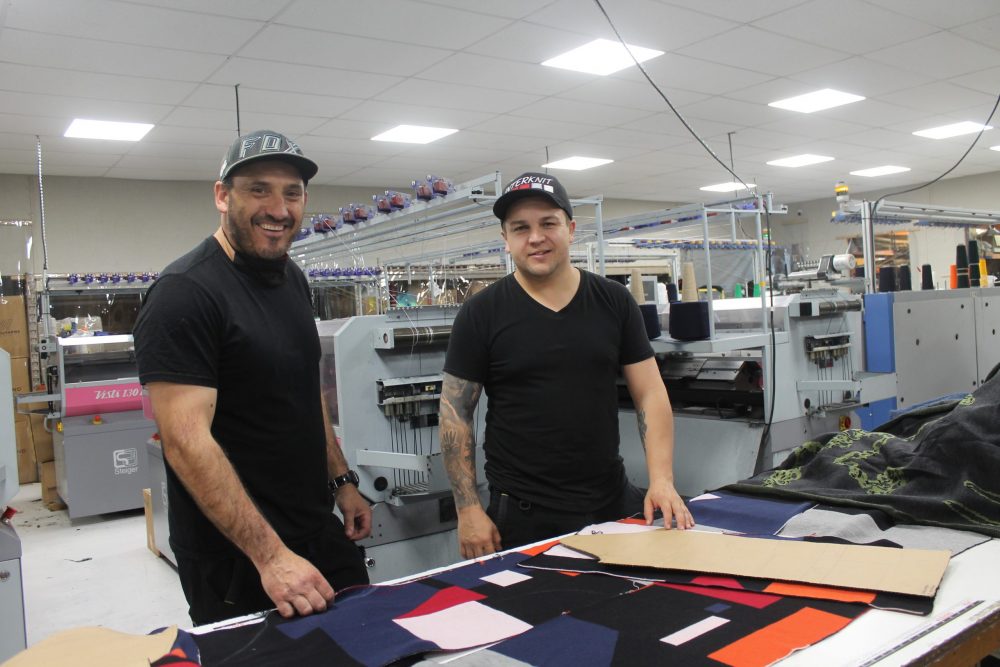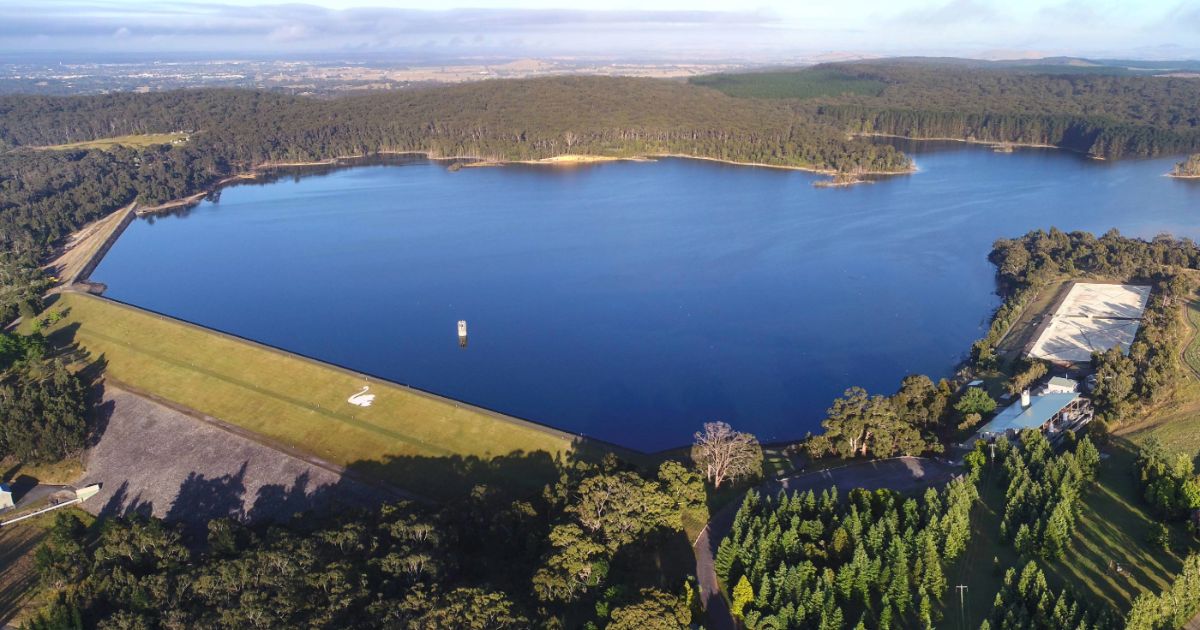Concept to completion: Designers fashion local textiles

Made with love: Interknit staff member Jamie Andrews and co-owner Andrew Blaszak work on student designer Olivia Fagan’s soon to be collection piece. Photo: RUBY STALEY
ALTHOUGH creating quality textiles is the company’s forte, Ballarat’s Interknit also works to support young and emerging fashion students to execute their designs.
While it isn’t the first time the team have worked alongside student designers, owner of Interknit Andrew Blaszak said he was happy to continue the collaboration and help students reach their conceptual goals.
“There are not many places like us in Australia that can actually make for these students,” he said.
“I feel it’s necessary to help the next generation with their designs, although sometimes they are a bit challenging because it’s keeping us in jobs and keeping youth enthused to make stuff in Australia.
“We’re happy to help them create their final art piece for presentation purposes and I’m proud to say that some of the girls last year came back and went to bulk production.”
One of this years’ fashion students working with Interknit is RMIT’s Olivia Fagan, and said Mr Blaszak she is pushing the boundaries with her designs.
“Olivia wanted a jumpsuit and we’ve never done a jumpsuit so it was one of those things that we thought we would just give it a go,” he said.
“Doing so gives us a heads up into making that sort of thing in case we were to take jumpsuits into bulk production and it keeps us on our toes in comparison to our plain-Jane school jumpers.”
With knitwear at the core of her graduate collection, Ms Fagan said it seemed only natural to work with Interknit. The bonus was she’s directly supporting a local business.
“They’re one of the last functioning mills in the country, it’s important to me to celebrate Australian industry,” she said.
“It was exciting to have someone like Interknit see the potential as a designer and to say they want to work along with me, it gives me a lot of power and excitement to be able to do what I want to do.”
In addition to the obvious knitwear capabilities and small business benefits of the company, Ms Fagan said it was especially satisfying to be involved in the entire process.
“It’s a powerful thing to be able to create your own textile with little to no waste compared to normal sewing and pattern making,” she said.
“My collection is focused on the textile and how important that is, it’s not about having really crazy designs, it’s about letting the textile do the talking.
“I’ve really enjoyed working with them and makes me really excited to keep working with Australian designers and textile manufacturers.”
Finishing off her honours in fashion design at RMIT, Lauren Hart McKinnon is another student who is also currently making use of Interknit’s staff and resources.
With a scholarship from the Australian Wool Education Trust under her belt, Ms McKinnon said it has been great to work alongside a direct producer.
“As part of my collection, I have a vest and a dress version of the vest and a jumper and a scarf with Interknit,” she said.
“I’m really grateful to be able to have a relationship with the people who are directly involved in making the textiles, contrasted against the usual process of fast fashion which is having absolutely no idea what is going into the clothes.
“As fashion moves into this mass-produced offshore entity, bringing it back to local and have a conversation with the manufacturers and put money back into our local economy was huge for me.”
As inspired by past students who also collaborated with Interknit including Ballarat’s Jordyn Smith, Ms McKinnon said she was empowered to create pieces that reflected her sustainable ethos.
“This new generation of fashion designers is incredibly focused on slow fashion and giving clothes the best chance to be more than just a piece that you wear and throw away,” she said.
“It’s difficult as students because we make everything and not really needing to get things outsourced but RMIT has been moving towards a much more circular design model and trying to implement the idea of sustainability not just environmentally but also socially.”


















